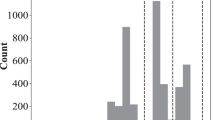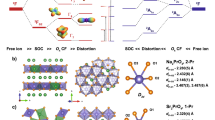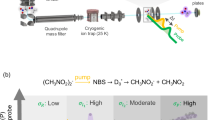Abstract
CHUA1 has listed the ionic radii for a number of divalent lanthanide species, La+2, Ce+2, Nd+2, Sm+2, Eu+2, Yb+2, some of which are probably incorrect. For convenience the radii given by Chua are listed in Table 1. Inspection of these values shows immediately that the value for Eu+2 is anomalously high compared with those lanthanides with lower atomic numbers, La+2 to Sm+2. At first one might be inclined to believe the value for Eu+2 is incorrect. But further examination reveals that these radii were calculated from the lattice parameters reported for the respective RO(NaCl-type) compounds listed by me2 (Chua's reference 14). Of these six RO compounds the only definitely known cation valence state is that of Eu which has been shown by magnetic measurements to be divalent3. Very little is known about the other HO compounds, and their existence has been seriously questioned4. If they should exist there is no reason why La, Ce and Nd would be expected to be divalent in these compounds (Sm and Yb, however, could be divalent). Indeed, if one examines the corresponding RSe, RS and RTe, one finds that La, Ce and Nd in these NaCl-type compounds are trivalent. Because the valence state of these five lanthanide ions in the RO compounds has not been established, the divalent radii given for La+2, Ce+2, Nd+2, Sm+2 and Yb+2 are open to question.
This is a preview of subscription content, access via your institution
Access options
Subscribe to this journal
Receive 51 print issues and online access
$199.00 per year
only $3.90 per issue
Buy this article
- Purchase on SpringerLink
- Instant access to full article PDF
Prices may be subject to local taxes which are calculated during checkout
Similar content being viewed by others
References
Chua, K. S., Nature, 220, 1317 (1968); and 221, 394 (1969).
Gschneidner, jun., K. A., Rare Earth Alloys (Van Nostrand, Princeton, New Jersey, 1961).
Matthias, B. T., Bozorth, R. M., and Van Vleck, J. H., Phys. Rev. Lett., 7, 160 (1961).
Brauer, G., Barnighausen, H., and Schultz, N., Z. Anorg. Allg. Chem., 356, 46 (1967).
Author information
Authors and Affiliations
Rights and permissions
About this article
Cite this article
GSCHNEIDNER, K. Comments on “Experimental Multivalent Ionic Radii”. Nature 224, 1019 (1969). https://doi.org/10.1038/2241019a0
Received:
Issue date:
DOI: https://doi.org/10.1038/2241019a0



